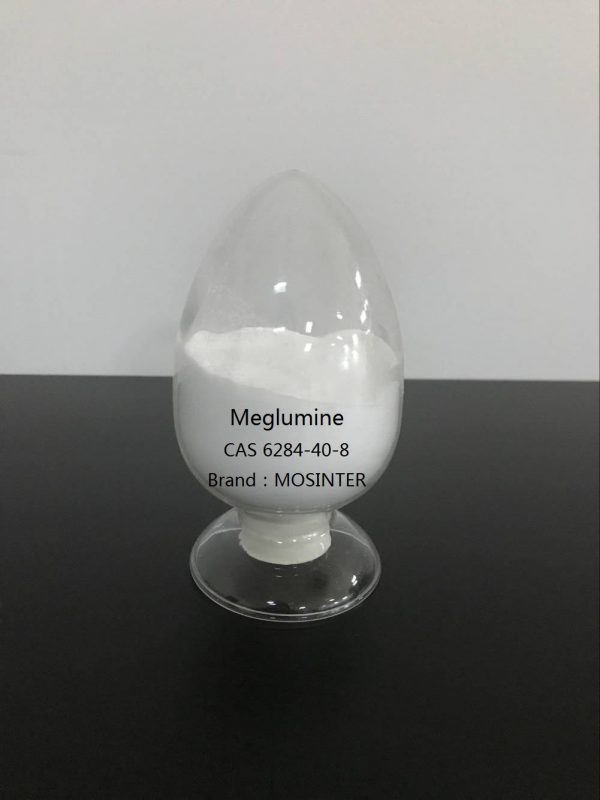| Model: | MOS 6284-40-8 |
| Place of Origin: | Zhejiang,China (Mainland) |
| CAS: | 6284-40-8 |
| Assay: | ≥99.0% |
| Appearance: | White crystalline powder |
| BRAND: | MOSINTER |
| Melting point: | 128.4℃~130.2℃ |
| Heavy Metals: | ≤10ppm |
| Nickcl: | ≤5ppm |
| Package: | 25KG drum |
- Have any questions?
- +86-189 8930 5995
- sales@mosinterchem.com.cn
Meglumine CAS 6284-40-8

Prednisolone CAS 50-24-8
26/11/2018
lisinopril CAS 76547-98-3
04/12/2018N-Methyl-D-glucamine (CAS: 6284-40-8)
It is an amine formed by reduction of glucosylamine or glucose oxime. N-alkylated glucamines
are prepared from D-glucose and relevant alkylamines. Meglumine is N-methyl glucamine, a
derivative of sorbitol in which the hydroxyl group in position 1 is replaced by a methylamino group.
It is a white crystalline powder; melting at 130 C. Meglumine is used in the preparation of certain
radiopaque media such as diatrizoate meglumine and iodipamide meglumine. Meglumine is combined
as an excipient (an inert substance) not an active ingredient. Excipients are added to ensure that the
shelf-life of the active ingredients can be long enough to be active until internal use. Excipients are
combined also to support the active ingredients, so that the latter can be easily administered or
absorbed in the body. Examples of meglumine-combined medicine are flunixin meglumine (non-steroidal
anti-inflammatory medicine, used as a veterinary anti-inflammatory and analgesic) and meglumine antimoniate
(antiprotozoal to treat leishmaniasis). Meglumine is used in ion-exchange resins to chelate boron ions selectively.
N-alkyl glucamines are used in preparing functional surfactants and some solutions which are stable over a
wide range of pH and ionic strength.
You must be logged in to post a review.


Reviews
There are no reviews yet.